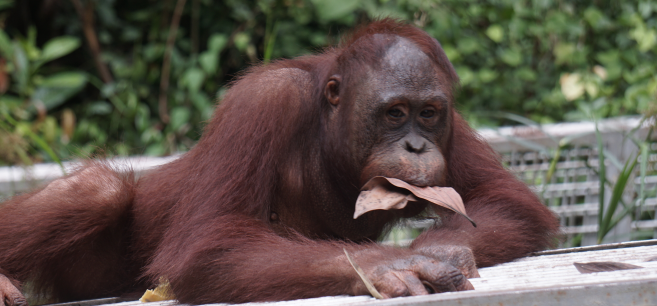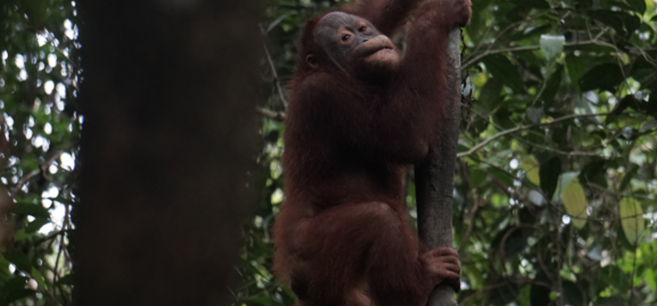
Orangutan Fact :

Orangutan Fact: A Remarkable and Endangered Species
Orangutans possess extraordinary reasoning and cognitive abilities. As large, gentle red apes, they share nearly 97% of their DNA with humans, making them one of our closest relatives. In Indonesia and Malaysia, these incredible creatures are called "orang-hutan," which translates to "person of the forest."
A Unique Ape Among Giants
Orangutans stand out in the world of great apes. Among the four nonhuman great apes (gorillas, orangutans, bonobos, and chimpanzees), orangutans are the only representatives from Asia, adding to their uniqueness.
Sexual Dimorphism in Orangutans
Orangutans exhibit sexual dimorphism, meaning there are noticeable differences between males and females, particularly in size and facial features. Males can weigh over 200 pounds (90 kg), while females are typically much smaller, around a third to half the size of males.
The most striking difference between fully mature males and females lies in the large cheek pads or flanges found on mature males. Males undergo two developmental stages: sub-adult and adult. Sub-adult males lack the distinctive cheek pads, large throat sacs, and long hair of fully mature males. These characteristics help adult males attract mates, with their throat sac producing a loud, resonating "Long Call" that echoes through the forest to locate females or fend off rival males.
Mature males lead solitary lives, only interacting with females during mating. They roam the ground more often than females due to their size and weight, but their magnificent red-orange hair and powerful build make them an iconic part of the forest landscape.
Life in the Treetops
Orangutans are the largest tree-dwelling mammals on Earth and are the only primarily arboreal great apes. Unlike other great apes that live part-time in trees, orangutans spend about 80% of their lives in the forest canopy. They are experts at climbing and creating nests for both day and night, often in trees as high as 120 feet.
Their hands and feet are specially adapted for an arboreal life, with long arms and flexible hips allowing them to move gracefully through the trees. While their movement is slower on the ground, they are fully capable of descending when needed. Bornean orangutans, for example, are often seen moving on the forest floor to find food or shelter.
Diet and Resourcefulness
Orangutans have a varied diet, feeding on leaves, flowers, insects, and over 300 types of fruit. Their extensive knowledge of the forest, passed down from mothers to offspring, enables them to find food efficiently and avoid wasting energy on unripe fruit. Despite the challenges of food scarcity in the rainforest, orangutans are highly independent. They may socialize in small groups during abundant times but are otherwise solitary.
Orangutans also display remarkable resourcefulness, using tools to assist in foraging, such as crafting sponges from leaves to collect water or making umbrellas to shield themselves from rain. Their ability to innovate and adapt demonstrates their intelligence and survival instincts.
Lifespan and Reproduction
In the wild, orangutans live around 35-40 years, though they can reach their late 50s in captivity. Female orangutans reach puberty at about 8 years old but typically become mothers in their teens. However, orangutans have one of the longest periods of childhood dependence in the animal kingdom. Babies nurse until they are around six years old and remain with their mothers for many years, observing and learning survival skills.
Females give birth approximately once every 8 years, the longest interval of any mammal. This slow reproductive cycle, combined with their small family size of only 4-5 offspring in their lifetime, makes orangutans particularly vulnerable to threats like habitat destruction and poaching.
The orangutan’s slow reproductive rate means that their populations are in critical decline, making their conservation vital to ensuring their survival for future generations. #OrangutanConservation #ProtectTheForest #EndangeredSpecies

